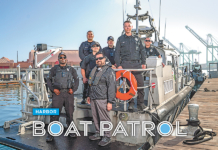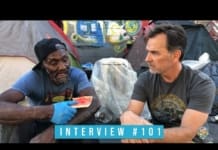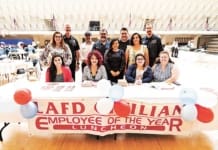 Photos by the Club and courtesy JuanCarlos Chan, Rec and Parks
Photos by the Club and courtesy JuanCarlos Chan, Rec and Parks
PlayLA is literally and figuratively a game-changer for the City.
Over the last year, more than 120,000 young LA athletes have said yes to PlayLA Youth and Adaptive Sports, Rec and Parks’ new program to offer equitable opportunities all City youths. The program represents among the biggest additions of sports programs at one time in the 133-year history of Rec and Parks.
It’s designed to provide access to youths and families with the greatest need an opportunity to play sports.
PlayLA Youth and Adaptive Sports is the City’s comprehensive new program for able-bodied participants ages 5-15 and children with disabilities ages 5-17. PlayLA will offer access to more than 40 different sport options (availability subject to season), including golf, judo, surfing, field hockey, flag football, track and field, dance and others, which Rec and Parks had never offered before.
 And, most significantly, PlayLA brings a whole new dimension to City youth recreation – adaptive sports, activities for young athletes with disabilities. Adaptive sports offered include sitting volleyball, adaptive swimming, goalball, para-equestrian, para surfing, wheelchair basketball, adaptive athletics, wheelchair tennis, and adaptive skateboarding and blind soccer.
And, most significantly, PlayLA brings a whole new dimension to City youth recreation – adaptive sports, activities for young athletes with disabilities. Adaptive sports offered include sitting volleyball, adaptive swimming, goalball, para-equestrian, para surfing, wheelchair basketball, adaptive athletics, wheelchair tennis, and adaptive skateboarding and blind soccer.
PlayLA brings cost equity, too – the opportunities come at just $10 per session (scholarships are available, too). That removes a significant barrier for many for private programs that could easily cost in the high hundreds of dollars, if not more. The registration fee includes equipment, too.
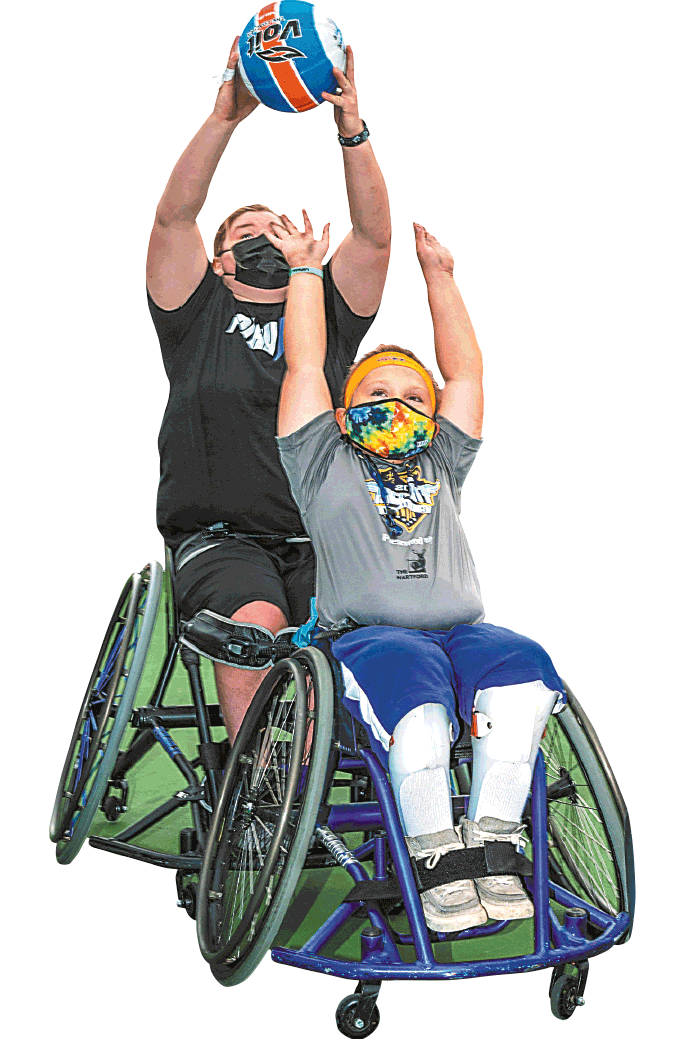 The Adaptive Team The Adaptive TeamPlayLA marks the first time adaptive sports are offered by Rec and Parks, and the team building this new opportunity from the ground up deserves a mention. They are Jacqueline Lopez, Sr. Recreation Director; Irving Moreno, Facility Director; and Eric Hall, Recreation Coordinator. |
Aquatics plays a strong part in PlayLA. Aquatics will continue to offer water polo, lifeguard training, swim teams, and free and low-cost swimming lessons.
The PlayLA program, introduced last November, is funded by $160 million secured as part of the 2028 Games Agreement through the International Olympic Committee, negotiated by Mayor Eric Garcetti.
This new program, administrators pledge, is only the beginning of a new era of youth sports programming at Rec and Parks.
Read all about it in this month’s Alive! interview.
The Club thanks Rose Watson, Public Information Director, Rec and Parks, Club Member, for her assistance.


On June 30, Club CEO Robert Larios and Alive! editor John Burnes interviewed the team of supervisors and managers running the PlayLA Youth and Adaptive Sports initiative. They are: Anita Meacham Williams, Superintendent and Administrator of PlayLA, 33 years of City service, Club Member; Ramon Cerrillos, Principal Records Supervisor, 26 years, Club Member; Laura Island, Principal Recreation Supervisor of Adaptive Sports, 34 years, Club Member; Caroline Lammers, Recreation Supervisor, 27 years; and Melanie Escamilla, Aquatic Director, 15 years, Club Member. The interview took place via Zoom.
A New Future for Youth Sports
Q: Thanks everybody for joining us today to talk about your amazing program, PlayLA, that’s a huge expansion of what Rec and Parks is offering the young people of LA. But first, tell us how you got to your current position. What’s the career path?
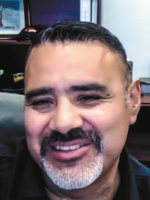
Ramon Cerrillos: I was a recreation major from Cal State Northridge. It was my career path to go into recreation. I started part-time with the City as a Rec Assistant and progressed to every position, ultimately coming here as a Supervisor in the Metro Division. I love it here now. And that led me to be an emergency position Principal over PlayLA.
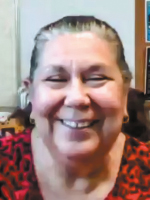
Laura Island: I began my education at San Diego State University, and I began my career as a Therapeutic Recreation Specialist in San Diego. Eventually, I came to Los Angeles to work as a Recreation Director and I continued my career with RAP, then I worked for probably about ten years in the therapeutic recreation field of the City of Los Angeles. I moved on as a Supervisor, and now, I am the Principal Recreation Supervisor for the West Region and the PlayLA Adaptive Sports Division.
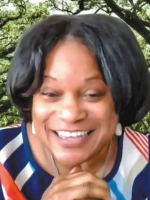
Anita Meacham Williams: My education started at Gilbert Lindsay Park when I was just a kid, and somehow I ended up majoring in recreation and leisure studies. I knew exactly what a kid wants when they come to a park, what they’re looking for. I started as a Director at Eagle Rock Recreation Center and moved on to become a Facility Director and Coordinator at Lincoln Heights. Then I was promoted to a Facility Director in the projects at Pueblo Del Rio in South Los Angeles. I just continued to be promoted – I became a Sr. Director, I worked at Queen Anne Rec Center, in municipal sports for gender equity for girls’ sports. I became a District Supervisor and then a Principal Supervisor in the Youth Development Division, then a Principal Supervisor overseeing a region in the Valley, and then a Superintendent here in Metro.
Q: You are a product of the Red and Parks athletic programs from when you were growing up.
Anita: If you ask the rest of them here, they probably were park rats as well.
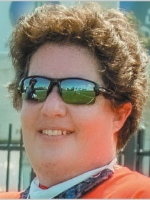
Caroline Lammers: I started out as a CIT at the Westwood Park & Recreation Center. I’ve been with the department for 27 years full-time, if you include my part-time years, it’s 30 years plus. I majored in recreation and leisure studies at Washington State University, and I knew early on that this was what I wanted to do. I worked for a cruise line right after college and that was great, but I came back to my roots working for the City. I’ve worked in the Pacific & Valley Regions, and now the Metro Region. In April of 2019, I was promoted to Recreation Supervisor (Emergency Appointment) for the PlayLA program, which is great. It’s an opportunity like none other, which I think everybody here would agree with. I am definitely a product of the city.
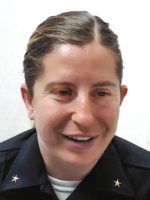
Melanie Escamilla: Okay. My aquatic career started very similarly, except it was at a pool. I was taught swim lessons, and I had older siblings in the programs, too. I started working part-time when I was 15, and eventually moved up to different careers.
I started my college career in public health education, earned my bachelor’s degree, waited for the full-time job opportunity as an Aquatic Facility Manager and applied for it. In the meantime, I went back to school and earned my master’s in public health program planning. As soon as our Aquatic Director, emergency-appointed physician opened up, I applied for that and received it. I’m in charge of all of aquatics programs. It’s been challenging with COVID and reopening and trying to plan new programs and manage staffing shortages.

 All About PlayLA
All About PlayLA
Q: Please describe what the amazing program, PlayLA, is all about and why it was created.
Ramon: PlayLA was definitely needed in the City to allow all the kids access to recreation. The charge is only $10, but we can scholarship classes and sports. There are no barriers for the kids to play at the park. This program fully allows access to all kids and is the best thing to happen for kids in my recreation career.
Caroline: It introduces non-traditional sports to youths throughout the City, especially the underserved. One example is field hockey. Field hockey traditionally isn’t that popular throughout Los Angeles, so we’re bringing it to parks. PlayLA is removing barriers and bringing in non-traditional activities that we may not have had an opportunity to introduce otherwise.
Anita: Equity is very important when we talk about adaptive sports. It’s quite a pleasure to resurrect our program for people with disabilities through PlayLA. We are really quite thrilled about having the additional funding to reach out to all of those children who might be a little apprehensive to come to the park, or they aren’t sure if programs are for them. We’re breaking barriers and introducing a lot of our communities that we don’t see at our parks. PlayLA is groundbreaking for the City of Los Angeles – to put this effort in and embrace children of all abilities so they can have lifelong leisure pursuits and can achievement a more equitable quality of life.
Melanie: One of the aquatic programs we’re bringing on is surfing. An advantage of the surfing program is that we’re taking kids from the pool to the beach. Many have never been to the beach. Even though we are in LA and the beach isn’t that far, they haven’t had that opportunity. Also, surfing is generally more expensive; we’re providing a 20-hour program for these kids and it’s only $10 for them. It’s huge for the community.
 Q: Is there any way to quantify the size and scope of PlayLA?
Q: Is there any way to quantify the size and scope of PlayLA?
Ramon: Since the program launched, over 120,000 have participated in our PlayLA Program, even with COVID and considering we didn’t offer sports in the summer of last year.
Q: 120,000 kids signed up?
Ramon: Correct.
Q: Holy cow. That’s unbelievable.
Ramon: That’s even with last summer’s restrictions when we didn’t play team sports. Aquatics went through, but the rest of the team sports did not.
Q: Incredible. Did this surprise you? It’s huge and robust and welcoming to so many young people who really couldn’t do it before. Did anybody see this coming or was it a surprise to you?
Anita: It was a surprise. Planning for it started about four and a half years ago with discussions with the International Olympic Committee, the Los Angeles Organizing Committee for the Olympics and Paralympics, LA28. I call it a game changer because no, no one saw it coming; when have we ever had an opportunity like this in the department? Not in the 33 years I’ve been here. It’s going to expose kids to Olympic and Paralympic sports, as well as sports that aren’t quite Olympic sports yet. It was a pleasant surprise. By the time we get to 2028, we’re looking for those numbers to be doubled, tripled, quadrupled.
Laura: It’s only the beginning, really, when you look at it. We’re only at the onset of this great movement. By 2028, we’re going to be a household name.
Q: When people mention Olympic benefits generally, they talk about economics, arenas, transportation, tourism and other elements. But programs like this aren’t often mentioned, at least not yet.
 Elements at Play
Elements at Play
Q: What are the elements of PlayLA?
 Ramon: On the recreation side, we have signature programs where we deal with national governing boards from the Olympics. For example, we have USA Judo that partners with us, where we’re offering programs at 20 sites and the instructors are certified by USA Judo. For tennis, we work with USTA Tennis. We have track and field and are trying to bring equestrian, skateboarding and taekwondo for the upcoming fiscal year.
Ramon: On the recreation side, we have signature programs where we deal with national governing boards from the Olympics. For example, we have USA Judo that partners with us, where we’re offering programs at 20 sites and the instructors are certified by USA Judo. For tennis, we work with USTA Tennis. We have track and field and are trying to bring equestrian, skateboarding and taekwondo for the upcoming fiscal year.
And then we have traditional sports – basketball, soccer, volleyball and flag football quarterly. This summer, we’re offering clinics – introductions to sports – so kids can sign up for them in the fall. That way, they can see if they like it or not.
The last thing is, we’ve had some PlayLA launches. We had a launch of all our adaptive sports. We had close to 450 kids show up that day at Algin Sutton Rec Center, and then we also offered a launch at three different locations – one in the Valley, one in Metro, and one at Expo – to introduce kids to adaptive sports as well.
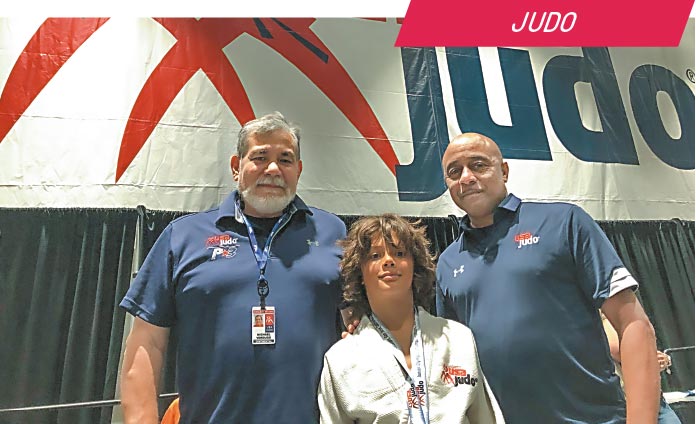 Laura: Adaptive sports is a brand new arena that we’re moving into for Recreation and Parks. We had a very successful para-equestrian clinic last Saturday, and it was just incredible to see kids with disabilities up on horseback riding in the 100-degree weather; they were troopers. We had a waiting list for that class. We’re going to start classes next month, but the clinic was very well received. The parents were thrilled. We’re also offering para-surfing coming up this summer, which is also very exciting for us, and we’re doing some of the same sports that Ramon is doing but for kids with disabilities, like adaptive skateboarding. We’re going to be doing wheelchair tennis this summer as well, and in the fall, we’re doing blind soccer. We have a really interesting set of activities that we’re going to be rolling out. Some people know some of these things – wheelchair basketball is pretty widely known, but not too many people know much about goalball. Not too many people have seen a child in a wheelchair on a skateboard ramp. People are going to be able to sign their kids up for these sports. The kids are going to be thrilled to try to do some of this stuff. It’s very exciting for our youths throughout the City.
Laura: Adaptive sports is a brand new arena that we’re moving into for Recreation and Parks. We had a very successful para-equestrian clinic last Saturday, and it was just incredible to see kids with disabilities up on horseback riding in the 100-degree weather; they were troopers. We had a waiting list for that class. We’re going to start classes next month, but the clinic was very well received. The parents were thrilled. We’re also offering para-surfing coming up this summer, which is also very exciting for us, and we’re doing some of the same sports that Ramon is doing but for kids with disabilities, like adaptive skateboarding. We’re going to be doing wheelchair tennis this summer as well, and in the fall, we’re doing blind soccer. We have a really interesting set of activities that we’re going to be rolling out. Some people know some of these things – wheelchair basketball is pretty widely known, but not too many people know much about goalball. Not too many people have seen a child in a wheelchair on a skateboard ramp. People are going to be able to sign their kids up for these sports. The kids are going to be thrilled to try to do some of this stuff. It’s very exciting for our youths throughout the City.
Melanie: The new aquatics program that’s funded through PlayLA is our surfing program. We are doing two-week sessions, and the opportunity is huge for the community. In addition, we working on renewing a working relationship with USA Swimming for our swimming programs, and that will come with huge benefits. It comes with a lot of coaching material: They bring out former or current Olympians for the kids to see as role models for what they could achieve. It’s about building up people to think they could be an Olympian. That’s huge for kids to see.
Laura: If you can imagine a child in a wheelchair seeing a Para-Olympian who has been in the Paralympics, having overcome obstacles, is unbelievable. The relationship that the Para-Olympians have with kids in our program is amazing and unselfish. There is no comparison to that relationship for the young athletes in wheelchairs.
Caroline: We have the ability to hire people. We’re having job fairs and hiring people in the community. We’re reaching out and are able to bring people in as we recruit for instructors. PlayLA is a very far-reaching program that has the ability to leave a legacy for generations to come. It’s not a one-shot deal.
Anita: Sometimes kids can’t participate in these sports because of the cost of the equipment, and we’ve been able to supply the gear they need. That’s an incentive for them to come back and get more instruction.
All told, PlayLA develops these kids into resilient youths by teaching them how to be team players, how to be leaders, and how to overcome difficulties. It’s an important part of this very unique program.

 Staffing
Staffing
Q: You mentioned staffing. This has to take the effort of everyone.
Ramon: This program does not exist without all the hard work of the Park Directors and the staff at the recreation centers. We rolled out the program. We tell them what to do. We’re creating funding. We’re doing all that. But every Director is a mirror of their community and asks what the community needs and the program is produced on that information. Without the Park Directors and their staff, HR/finance teams, aquatics, our maintenance and construction team and everything that is required to ensure PlayLA is successful, this program would not exist or go forward.
Anita: The other supporting components that make PlayLA successful include all of our maintenance and construction and our park planners who get these facilities built. The people behind the scenes like our Data Specialist – every month, she’s breaking down all of our financials and expenditures and helping us in all these areas. It’s not just us in the field, but it’s the support staff that we have.
 Equity
Equity
Q: How does PlayLA address equity in the City of LA?
Ramon: We were already offering the Girls PlayLA program, which targets girls to come and play all the sports. But then the equity part of PlayLA is being able to afford the program and taking away the barriers that used to hold people back from buying equipment.
Anita: We are happy to tear down this barrier that stops a kid from playing tennis, stops a kid from learning golf, stops a kid from ever getting on a horse. This is equity. This says that all the kids in Los Angeles have an opportunity if they want to learn how to ride a horse when they wouldn’t otherwise be able to, or tennis or golf, or learn how to skateboard because guess what? They’re going to get a skateboard.
Then it’s also the building of our facilities and making sure that the park is accessible in that a family is only a ten-minute walk to a park; that’s equity, too. Some of the parks are staffed. Some of the parks aren’t staffed, and they’re passive parks. They’re parks that you can just go and you can sit under a tree or you can sit on a bench or you can walk your dog on a leash. All of that is a part of equity, and that’s part of the hopes and dreams of the department.
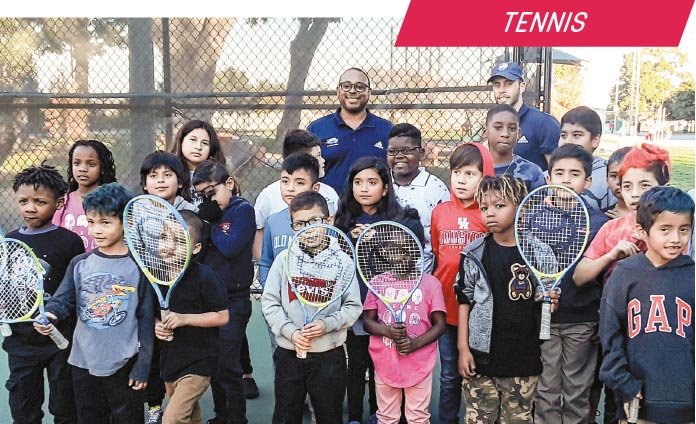 Laura: Adaptive sports is a big piece to the equity movement. We’re recognizing that the field was not equitable, and we’re doing something about it. We all know that there are challenges in this world. Through this funding, we’re able to do something about it. The fact that we have this funding from LA28 helps us tackle not only sports and the inequities that have existed in the past, but it even goes beyond sports. I’ve been working on some things that are helping to include youths with disabilities into our day camp programs. We can attain it. With this funding, it’s given us all such a great promise at the end of that rainbow that we can achieve it. At the end of all this funding, things are going to be very different for kids with disabilities and their families. It’s not going to be the same Recreation and Parks. We’re going to see kids in wheelchairs in all of our programs. It’s not going to be unusual. It’s going to be common.
Laura: Adaptive sports is a big piece to the equity movement. We’re recognizing that the field was not equitable, and we’re doing something about it. We all know that there are challenges in this world. Through this funding, we’re able to do something about it. The fact that we have this funding from LA28 helps us tackle not only sports and the inequities that have existed in the past, but it even goes beyond sports. I’ve been working on some things that are helping to include youths with disabilities into our day camp programs. We can attain it. With this funding, it’s given us all such a great promise at the end of that rainbow that we can achieve it. At the end of all this funding, things are going to be very different for kids with disabilities and their families. It’s not going to be the same Recreation and Parks. We’re going to see kids in wheelchairs in all of our programs. It’s not going to be unusual. It’s going to be common.
Q: Talk about that a little more.
Laura: As we look beyond 2028 and what we can achieve, it’s important to realize that our City Council is already very much aware of the trajectory that we are in. Last May, the City Council voted unanimously to expand access to adaptive sports to transitional age youths, which covers 18 to 24, and to adults and seniors. PlayLA is the tip of the iceberg. The Council motion was set forth to improve on our infrastructure, and we all know that some of our facilities are decades and decades old and definitely not accessible to people with disabilities. This whole idea of making facilities physically accessible is in the forefront of the Council’s minds.
We’re going to see a very different Los Angeles, a different Recreation and Parks Dept. at the end of 2028, and it’s going to produce a program in the future that we’re all going to be very proud to have been a part of.
Anita: We are also looking at our political climate and environment. We just finished our primary for electing the next mayor of Los Angeles. The current mayor was a big part of this happening with the International Olympic Committee and Paralympic Committee. With a new mayor coming in, and we don’t know who this person is going to be, we hope that they embrace this whole idea of accessibility for youths to participate in quality sports.
 The Olympic Spirit
The Olympic Spirit
Q: This all comes with big-time funding from LA28 through the 2028 Games Agreement. That’s $160 million.
Anita: Right. The funding element allows us to offer quality youth sports, fitness, adaptive as well as aquatic activities for $10. That right there, it tears down that barrier that prevents parents from being able to introduce their kids to more than one sport. Their kid now has an opportunity to try field hockey. They have an opportunity to learn how to skateboard and to get a skateboard. They have the opportunity to learn so many new things. That funding element is truly the key. It creates that equity.
Q: That’s a strong Olympic connection of course. The expressed desire here isn’t necessarily to produce Olympians, but I imagine you certainly encourage people to hope and dream.
Anita: The connection started with the contract when the International Olympic Committee, the US Olympic and Paralympic Committee and the City of Los Angeles came together, as well as with LA28. The City of Los Angeles was named as the host city. We’ll have some athletes who will be Olympians. We don’t know who they are, of course – we’re starting at the basics. But the vision is that once we go through the basics, we want to have something that takes them to the next level, something more competitive. We want to build a foundation and get these kids the opportunity to see themselves as maybe Olympians in the future. We are trying to create Olympians, but first, we want to create resilient youths. We want youths who can see a bright future for themselves and see sports as a part of that.
Melanie: USA Swimming is really bringing their connections and creating that mentorship. Teaching lifelong skills is the most important thing for us. The cost to get the young athletes to even close to an Olympic level is really expensive. It’s a huge barrier; at some point they just can’t go any further. We’re giving them the opportunity to go further.
Caroline: It doesn’t necessarily mean that when you learn field hockey you’re going to the Olympics, but learning field hockey could also bring opportunities for high school and collegiate scholarships. If you have a dream and then you’re afforded an opportunity, pretty much anything can happen. It all starts with the vision, an opportunity and a dream, and with those, youths can thrive.

‘By the 2028 Olympics, we’re going to be a household name.’
— Laura Island
 Giving Back to Their City
Giving Back to Their City
Q: What do you love about what you do?
Laura: In my experience working with children and with parents of children with disabilities, I see so much hope come to life, hope that wasn’t there before or they didn’t think was achievable. As a parent, I know how proud I am of my kids when they score a basket or throw a football and make a touchdown and all of that. But to see your kid whom you didn’t know what their future was going to be when they were born with a disability or after a car accident – you thought maybe there was little hope for them. But then you found something like sports and found something like maybe PlayLA and there was hope for you as a parent. There was hope for the child to have a future that they could be proud of and they could be like every other kid that you see. You can have fun. You can play sports. It’s inspirational that I can be a small part of a parent’s life and child’s life that can make them continue to hope and dream and achieve. That’s very gratifying to me.
Melanie: It’s when I visit one of our pools and see the programming on a hot summer day, seeing a lot of people in the water having fun. It brings me back to my childhood being at a pool. I love having a parent who doesn’t even know me approach me and thank us for having a pool being open and enjoying the success of their kids in a program. Seeing that, I feel that what I do does matter.
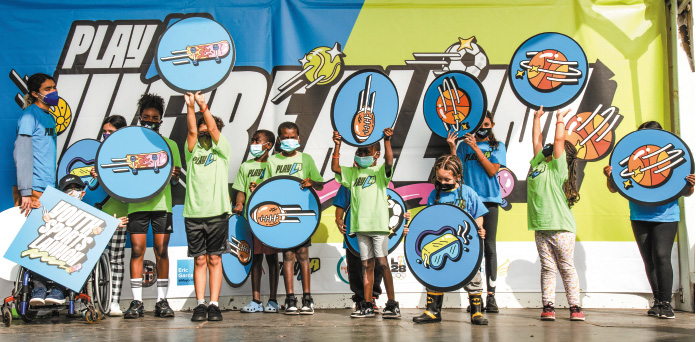
Caroline: Having a macro impact on the lives of the children. When I left one of my facilities, they said, “We’re so sorry to see you go. We love you at the park.” I said, “By me taking this step, I’m going to be able to have a macro impact on the lives of many children throughout the entire City of Los Angeles.” Nothing can be more gratifying than having a positive impact on youth who participate in our programming. It’s great when we’re in the field. Knowing that you’re having a positive impact on these kids is what drives me.
Anita: I love that what I do increases and improves the quality of life of the families that come to our parks. We’re all working toward the same goal – building and designing programs that are going to impact the life of a boy or girl. That is of value to society.
Ramon: I grew up at Hubert Humphrey Park. That area had a tremendous gang problem. We wanted to play sports at the park, but nobody was there to coach us. that became my issue, and I saw the destruction of the property and the wasted talent out there because we didn’t have this. With this program, I’m able to bring true recreation to the rec centers at 81 sites that are very similar to the park where I grew up. It’s very freeing to see kids be free at a park and play without worrying about gangs and drugs and issues like that. When you have 500 kids playing at a park, all the bad stuff leaves the park. This park brings it in for $10, or we can scholarship it. We’re able to give jobs to kids in the area. We all grew up through the City, and we’re able to pass that on. New generations of staff can be a bridge and set up our department as the best in the nation.
Q: Thanks, everybody, for taking the time to talk about PlayLA. It’s a great advance in what Rec and Parks is offering.
Melanie: Thank you.
Laura: Thank you.
Anita: Thank you.
Ramon: Thank you!
|
BEHIND THE SCENE
|



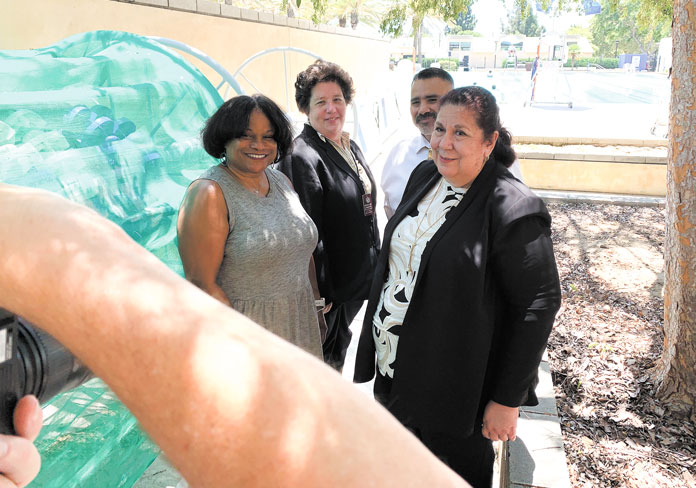 Alive! editor John Burnes photographs Rec and Parks’ PlayLA supervisor team, from left: Anita Meacham, Caroline Lammers, Ramon Cerrillos and Laura Island at EXPO Rec Center.
Alive! editor John Burnes photographs Rec and Parks’ PlayLA supervisor team, from left: Anita Meacham, Caroline Lammers, Ramon Cerrillos and Laura Island at EXPO Rec Center.

